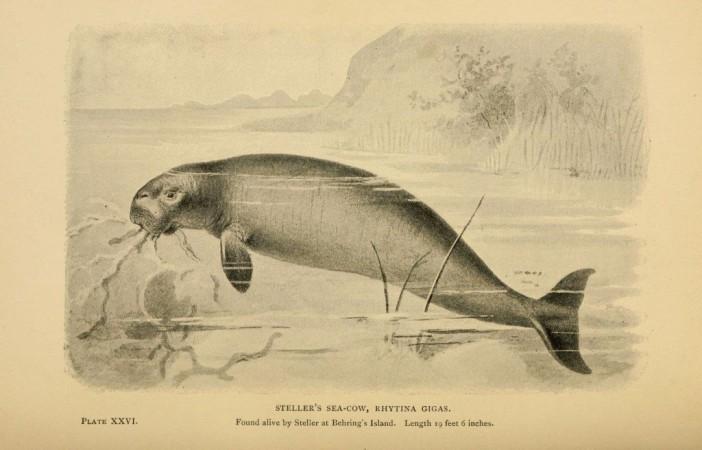
An extinct sea cow's massive skeleton was recently discovered on a Siberian beach in Russia. The Steller's sea cow was found in the Komandorsky Nature Reserve -- an ecological sanctuary.
Russian researcher Marina Shitova and her team began to excavate the site after they spotted the animal's rib cage protruding from the soil. They dug out the skeleton over the course of four hours.
Though its skull and several vertebrae were missing, the scientists estimated that when it was alive, it measured 17 feet and mature adults might have reach 25 feet and weighed between eight and ten tons, Motherboard reported.
The animal was named after George Stellar -- an 18th-century naturalist, who described sea cow as: "The animal never comes out on shore, but always lives in the water. Its skin is black and thick like the bark of an old oak, its head in proportion to the body is small, it has no teeth, but only two flat white bones one above, the other below".
Reportedly, the Steller's sea cow was first discovered in 1741 by explorers who ventured into parts of the Arctic Circle. It was mentioned that it could be found in abundance in the North Pacific.
Overhunting of the sea cow made it extinct, as it was a gentle animal which moved slowly in herds. Their nature made them an easy prey and almond oil like tasting flesh attracted hunters. Moreover, it is said that one sea cow could have fed more than 30 men, for a month. The last sea cow was reportedly killed in 1768.
The officials of Komandorsky intend to display the newly-discovered specimen in the reserve's visitor centre. They also to teach the history of extinction on the Commander Islands to the future generations.














